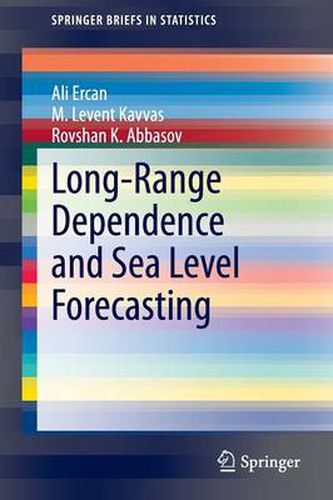Readings Newsletter
Become a Readings Member to make your shopping experience even easier.
Sign in or sign up for free!
You’re not far away from qualifying for FREE standard shipping within Australia
You’ve qualified for FREE standard shipping within Australia
The cart is loading…






This title is printed to order. This book may have been self-published. If so, we cannot guarantee the quality of the content. In the main most books will have gone through the editing process however some may not. We therefore suggest that you be aware of this before ordering this book. If in doubt check either the author or publisher’s details as we are unable to accept any returns unless they are faulty. Please contact us if you have any questions.
This study shows that the Caspian Sea level time series possess long range dependence even after removing linear trends, based on analyses of the Hurst statistic, the sample autocorrelation functions, and the periodogram of the series. Forecasting performance of ARMA, ARIMA, ARFIMA and Trend Line-ARFIMA (TL-ARFIMA) combination models are investigated. The forecast confidence bands and the forecast updating methodology, provided for ARIMA models in the literature, are modified for the ARFIMA models. Sample autocorrelation functions are utilized to estimate the differencing lengths of the ARFIMA models. The confidence bands of the forecasts are estimated using the probability densities of the residuals without assuming a known distribution.
There are no long-term sea level records for the region of Peninsular Malaysia and Malaysia’s Sabah-Sarawak northern region of Borneo Island. In such cases the Global Climate Model (GCM) projections for the 21st century can be downscaled to the Malaysia region by means of regression techniques, utilizing the short records of satellite altimeters in this region against the GCM projections during a mutual observation period.
This book will be useful for engineers and researchers working in the areas of applied statistics, climate change, sea level change, time series analysis, applied earth sciences, and nonlinear dynamics.
$9.00 standard shipping within Australia
FREE standard shipping within Australia for orders over $100.00
Express & International shipping calculated at checkout
This title is printed to order. This book may have been self-published. If so, we cannot guarantee the quality of the content. In the main most books will have gone through the editing process however some may not. We therefore suggest that you be aware of this before ordering this book. If in doubt check either the author or publisher’s details as we are unable to accept any returns unless they are faulty. Please contact us if you have any questions.
This study shows that the Caspian Sea level time series possess long range dependence even after removing linear trends, based on analyses of the Hurst statistic, the sample autocorrelation functions, and the periodogram of the series. Forecasting performance of ARMA, ARIMA, ARFIMA and Trend Line-ARFIMA (TL-ARFIMA) combination models are investigated. The forecast confidence bands and the forecast updating methodology, provided for ARIMA models in the literature, are modified for the ARFIMA models. Sample autocorrelation functions are utilized to estimate the differencing lengths of the ARFIMA models. The confidence bands of the forecasts are estimated using the probability densities of the residuals without assuming a known distribution.
There are no long-term sea level records for the region of Peninsular Malaysia and Malaysia’s Sabah-Sarawak northern region of Borneo Island. In such cases the Global Climate Model (GCM) projections for the 21st century can be downscaled to the Malaysia region by means of regression techniques, utilizing the short records of satellite altimeters in this region against the GCM projections during a mutual observation period.
This book will be useful for engineers and researchers working in the areas of applied statistics, climate change, sea level change, time series analysis, applied earth sciences, and nonlinear dynamics.